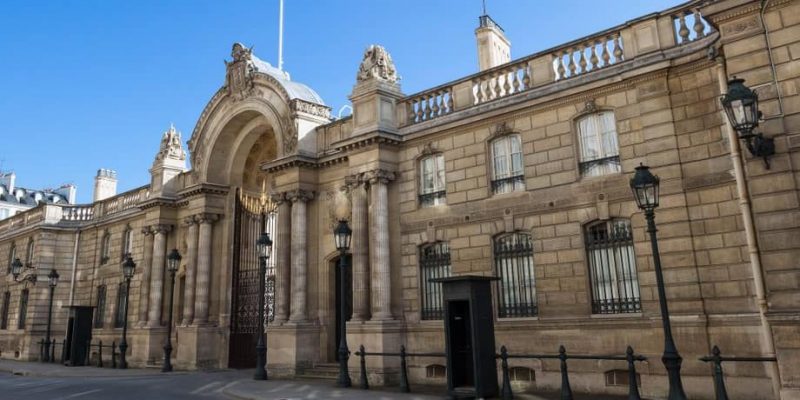We explain what centralism is, its characteristics, types and differences with federalism. Furthermore, democratic centralism.

What is centralism?
In political theory, centralism is the doctrine that proposes a single and centralized government for the administration of the State. That is, it proposes the concentration of political power and decision-making in a central government. It is considered the opposite of federalism and decentralization.
In the States where centralism governs, The entire territory of the country is governed from the headquarters of the central government which is located in a single geographical and administrative location. From there, it controls the rest of the country through agencies or other subordinate entities, without granting too much margin of autonomy to regional powers.
Two types of centralism can be distinguished:
- Pure or concentrated centralism. It is the extreme form of centralist or unitary States, in which a central government concentrates all the powers of the State.
- Deconcentrated centralism. It offers the central government various mechanisms to delegate power. It can in turn be classified into two types:
- Centralism with administrative deconcentration. It consists of the centralization of political power but the decentralization of administrative tasks. That is, the central State retains ownership of political power and its administrative powers but delegates the latter to its dependencies in the rest of the territory.
- Centralism with political and administrative deconcentration. It consists of the coexistence between a strong central government and a certain margin of autonomous political representation of regional and local entities, which is why it can occur in unitary and federal models.
Key points
- Centralism is a political doctrine that proposes the concentration of political power in a central government and that usually characterizes unitary states.
- In a centralist State, the central government administers the country from a single headquarters and limits or nullifies the autonomy of the regions.
- It is opposed to federalism, which promotes decentralization and autonomy of provinces or states within the framework of a federal State or federation.
- There are different models of centralism: pure (concentrates all power in the central government) and deconcentrated (admits limited forms of administrative and political decentralization).
- Democratic centralism is a specific doctrine, devised by Lenin and applied in several communist parties, which combines central control of the party leadership with a limited margin for internal deliberation.
Characteristics of centralism
In general, the characteristics of centralism are the following:
- It concentrates the greatest share of political power and decision-making in the central government, generally installed in the country's capital, and leaves very little or no autonomy to local or provincial entities.
- The central government assumes the administrative powers that affect the entire territory, although sometimes it delegates some of them to local or regional agencies.
- The central government plans and coordinates public policies and projects of national scope, and uniformly applies laws and political measures, without taking into account local or regional particularities.
- The state management of economic resources and taxes is controlled by the central government, which can favor some regions and harm others.
- Centralized decisions can be based on a lack of knowledge of regional realities, which can generate inefficient management or promote discontent among local populations.
- The central government is often able to resolve regional conflicts, rule on cases of national importance, or review and overturn decisions by regional or provincial authorities.
- Currently, some unitary states are based on varying degrees of centralism, although they often have various forms of administrative decentralization. Some examples are Monaco, France, Portugal, United Kingdom, Chile, Paraguay and Japan.
Centralism and federalism
Centralism and federalism are two opposing models of State organization. Centralism, on the one hand, promotes a centralized or unitary State in which political power is concentrated by the central government. Federalism, for its part, proposes a federal State with decentralized political power in which provincial or regional entities retain their autonomy, even when there is a common government that keeps them united in a federation.
The choice between centralism and federalism was a crucial issue in the discussions on the organization of the State during the 19th century, especially in the nascent Latin American republics, which had to choose between both models of political and territorial administration. The discrepancies between federalists and centralists or unitaries led, in many countries, to civil wars and violent conflicts as happened in the United Provinces of the Río de la Plata (later the Argentine Republic) or in Mexico.
Democratic centralism

Democratic centralism is the political and disciplinary practice applied in the 20th century by the Communist Party of the Soviet Union and that other communist parties, such as China, also adopted. It proposes combining the central and vertical control of the single party with the plural and free discussion characteristic of democracy.
The fundamental idea is that absolute central control by the vanguard of the party prevents the emergence of new ideas from the bases, but that free discussion implies the risk of internal divisions and the emergence of factions, which can threaten the unity of the party. party and against the effectiveness of its actions. Thus, the model of democratic centralism proposes the holding of specific instances of debate, such as congresses convened by the party leadership but the closure of all discussion once the voting has closed. In this way, once the decisions are reached by the majority, they are binding and obligatory for all members of the party.
Democratic centralism It was devised by the Russian revolutionary Vladimir Ilyich Lenin (1870-1924) in his treatise “What is to be done?” 1902. However, when Lenin assumed command of Bolshevik Russia after the October Revolution of 1917, an opposition faction within the Bolshevik party argued that Lenin was not respecting the principle of democratic centralism, as he was imposing a model of dictatorship of the party that favored the concentration of political power in the Bolshevik leadership over worker and local organizations. In this way, a dissident group known as the “Democratic Centralism Group” or “Group of 15” was born.
Throughout the history of the Soviet Union, the concept of democratic centralism continued to be used by its leaders. However, In practice, party congresses were not areas of democratic discussion but spaces to support the decisions made by the party leadership.
References
- Bobbio, N., Matteucci, N. and Pasquino, G. (Dirs.). (2015). Politics Dictionary. 21st century.
- Dagger, R. and Ball, T. (2008). Democratic centralism. Encyclopedia Britannica. https://www.britannica.com/
- Galán Lorda, M. (2022). The construction of States: centralism, federalism, independence and regionalism. University of Navarra Editions.
- Heslop, D. A. (2023). Political system. Encyclopedia Britannica. https://www.britannica.com/





